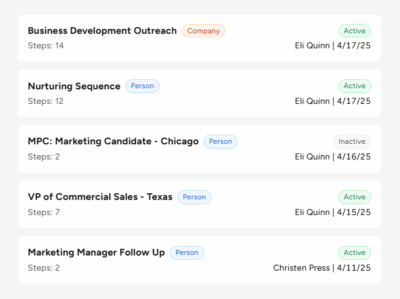When you think about recruiting on social media, you might not consider Twitter. Twitter isn’t specifically designed for job hunting and recruiter networking. However, you can still use the social media site to find candidates and share your job openings.
Just like recruiting on other social media sites, recruiting on Twitter has its own quirks. To be successful at Twitter recruiting, you need to create a strong foundation and use strategic methods.
Why you should do recruiting on Twitter
Twitter doesn’t have a specific purpose as a platform. It’s a fairly open platform because it typically isn’t used for networking (like LinkedIn) or staying in touch with family and friends (like Facebook). Because Twitter is more open, it’s easy to reach out to and connect with people on Twitter.
There are approximately 319 million monthly active users on Twitter. This presents a massive opportunity for sourcing candidates.
Also, using Twitter for recruitment is free, which is always a great thing.
How to use Twitter for recruiting
Use these tips to help you start using Twitter for recruiting.
Creating a profile
The first step to Twitter recruiting success is creating a profile that interests people. Completely fill out your profile.
Use a picture that is professional yet would appeal to the people you are trying to recruit. For example, if you are recruiting business professionals, you might want to dress up more by wearing professional attire. If you are recruiting for information technology positions, you might want to use a picture where you look more casual.
In your profile, you should disclose that you are a recruiter. However, you should not only say you are a recruiter. Include your interests. Use humor. Craft a bio that makes you interesting, likable, and approachable.
In your profile, you should present yourself as a desirable person that people want to connect with.
Finding potential candidates
The key to successfully using Twitter for recruitment is finding people and building a following. Ideally, you want people in the industries you recruit for to follow you.
To find people, you can use Twitter’s search bar. Twitter also has a useful advanced search option where you can do a more detailed search. Other outside websites have Twitter search tools that you might find even more helpful.
Search Twitter by job titles or industry
Search for people by profession. You can type in common titles that people have in an industry. People don’t always use their actual title in their profile, so you should try creative terms. Some people use the terms “guru,” “ninja,” or other unique terms. For example, a programmer might identify as a “software geek” on Twitter.
Search Twitter by location
You can also search for people based on location. Many people use an accurate location. However, some people use a made up location, such as “Narnia” or “Hogwarts.” Searching based on location alone could leave out qualified people.
Search Twitter by hashtags
Not only does Twitter search the text in bios, but it also searches the text of tweets and hashtags. So you can see what people are talking about. And if an event has a designated hashtag, you can find relevant people by searching that hashtag.
Once you find people, you need to build your following. The easiest way to get people to follow you is by following them first. Follows on Twitter are often reciprocal. So, if you follow someone, they’ll follow you back as long as they find you interesting.
Use face-to-face networking or phone calls to improve your recruiting on Twitter. When you talk to potential candidates, ask them if they have a Twitter account. If they do, ask them to follow you, and you should follow candidates back.
By building up your followers, you have more chances of having your job postings be seen.
Posting jobs and engaging with your audience
You can post your job openings by tweeting them. You might want to include the job title, location, brief description, contact info, and a link to apply. Twitter has a 140 character count limit, so be strategic. You want to give enough information to make people interested.
Tweet your job openings multiple times. People might not see your tweet the first time, so posting several tweets about an opening helps more people see your post. Do not use the same exact text each time you tweet about a job opening. Use multiple formats to keep people interested.
Don’t only tweet about open positions. Twitter is a social network, not a job board. People will get bored and unfollow you if you only tweet about your job openings.
To add variety to your feed, show your personality. Tweet about things you think are interesting (and hopefully your followers will think are interesting, too). Post useful articles about the industries you recruit for.
You should also interact with and retweet your followers. By engaging your followers, you will appear more personable and likable.
Using hashtags
Hashtags are a key part of Twitter recruiting. Using hashtags in your tweets makes them more searchable. People who don’t follow you are more likely to see your job posting tweets if you use relevant hashtags.
There are three basic types of hashtags that you should use in your job tweets. First, you can use hashtags that are job keywords. These might look like #pharma, #webdev, or #sales. Next, there are location hashtags. These hashtags alert people to the location, such as #Cleveland or #CLE. And finally, some hashtags tell people the post is for a job opening. These include #job, #jobs, #career, and #hiring.
Using a variety of hashtags creates more opportunities for your tweet to be seen. Try including different hashtags when you repost a job opening to gain even more reach.
Measuring success
How do you know if recruiting on Twitter is working for you? Use an recruiting software with an applicant tracking system to keep track of how many candidates come from Twitter. You can organize your candidates and see how far they are in your process.
If you see in your ATS that you pull several candidates from Twitter, then the social media site is likely a successful recruiting tool for you.








